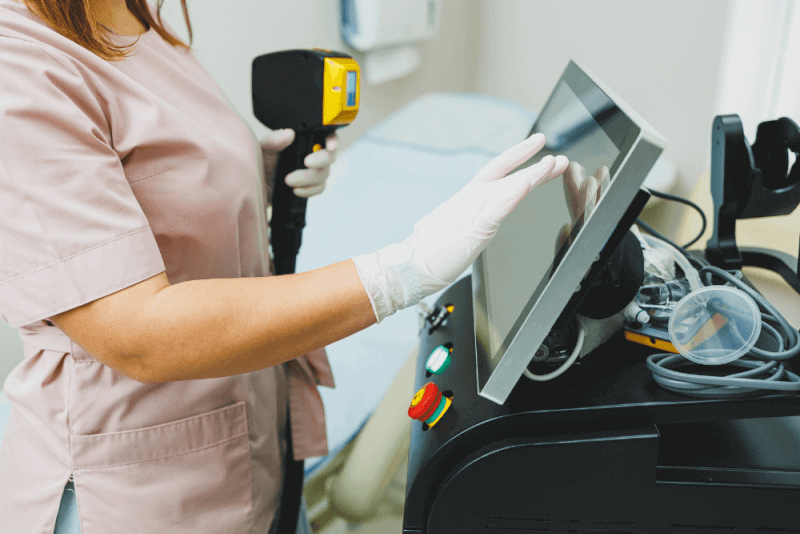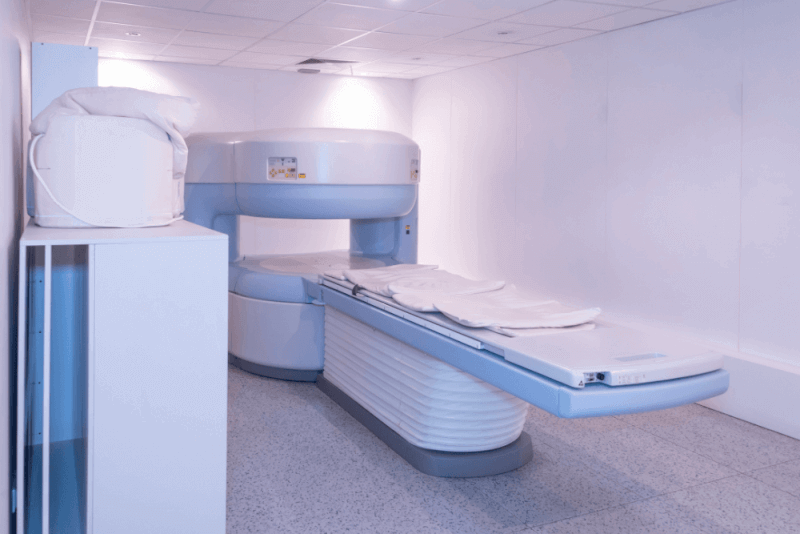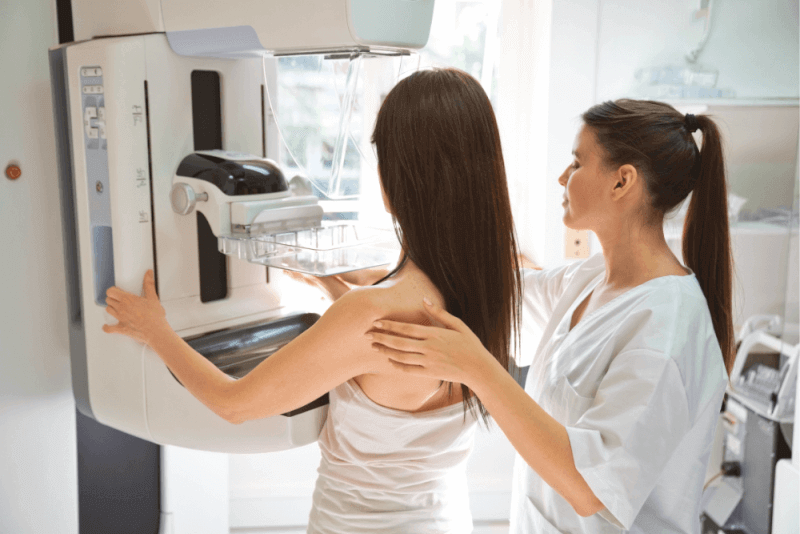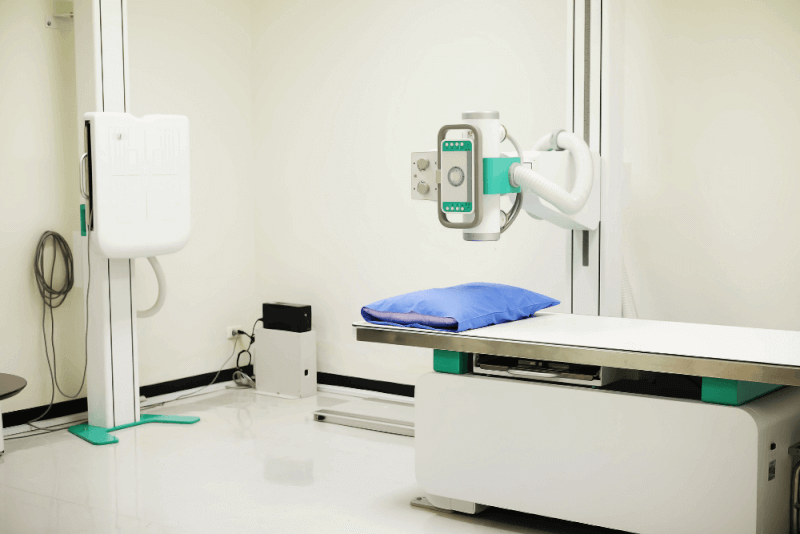30-Second Summary
- Elastography is a type of test that checks the elasticity of organs in the body using painless and low-frequency vibrations.
- Before the test, foods and drinks high in sugar should be avoided, as sugary products can affect liver stiffness. The dietary instructions given to patients may vary.
- The most common use of elastography is to monitor the liver for fibrosis, which may progress to late-stage liver disease or cirrhosis.
- Elastography may not be suitable for all patients.
What Is Elastography?
Elastography is a type of test used to check the elasticity of organs in the body. It is a painless procedure that uses low-frequency vibrations. A loss of elasticity in tissues causes them to stiffen. In particular, liver stiffness is considered a potential indicator of liver disease.
Types of Elastography
There are two main types of elastography.
Fibroscan
Also known as elastography ultrasound, this method uses ultrasound waves to create images of organs. It is a painless and fast procedure and is also referred to as transient elastography.
Magnetic Resonance (MR)
This test combines sound waves with electromagnetic and radio frequencies from an MRI. It does not involve radiation and can be performed alone or in combination with MRI.
Ultrasonography
Also known as shear wave ultrasonography, this is a newer technology. The transducer used provides higher quality sectional images of the organ. Still in development, this technology is being used in areas such as the breast, liver, musculoskeletal system, prostate, and thyroid nodules.
How Is Elastography Performed?
The method of application may vary depending on the type of elastography. Transient elastography is typically completed in just a few minutes and includes the following steps:
- A water-based gel is applied to the skin to reduce friction in the target area.
- An ultrasound probe is moved over the skin to locate the organ.
- Once the organ is located, painless low-frequency vibrations are emitted.
- These vibrations reflect back from the organ and are sent to a computer.
- A software program converts the vibrations into images.
- These images allow specialists to observe the organ’s stiffness and whether there is fluid present.
MRE typically takes about 5 minutes to complete, but when combined with MRI, the procedure can last up to 45 minutes. The steps of MRE include:
- The patient lies down on the table and is secured with straps to stay still during the procedure.
- A small device is placed on the lower right side of the chest.
- Apparatus connected to the device and transmitting radio waves is placed on the skin.
- A contrast agent is injected.
- The patient is positioned inside the MRI machine.
- During the procedure, patients may be asked to hold their breath for a few seconds as vibrations are transmitted.
Preparation for Elastography
Preparation for elastography may include the following:
- Avoid consuming foods and drinks high in sugar before the test, as sugary items can affect liver stiffness. Dietary instructions may vary, so it’s important to consult your doctor beforehand.
- Do not wear jewelry or accessories on the day of the test. This includes rings, watches, hair clips, hearing aids, and removable dentures.
- If you have any metal objects in your body such as shrapnel, bullets, old heart defibrillators, or pacemakers, inform your radiologist. These metals can interfere with the MRI unit.
- If you are pregnant, be sure to let your radiologist know. Although MRI is generally considered safe during pregnancy, it is usually avoided during the first trimester unless the benefits outweigh the risks.
Uses of Elastography
The most common use of elastography is to monitor the liver for fibrosis, which may occur in the early stages and progress to advanced liver disease or cirrhosis. Fibrosis can reduce the amount of blood flowing through the liver.
This may eventually cause blood to flow back behind the liver. If left untreated, it may lead to the following serious health conditions:
- Stomach or intestinal bleeding
- Cirrhosis
- Liver failure
- Liver cancer
Other uses of elastography may include:
- To guide treatment decisions
- To monitor the response to treatment
- To assist with liver biopsy guidance
Advantages of Elastography
The advantages offered by elastography include the following:
- It is a non-invasive imaging technique that does not expose the body to ionizing radiation.
- Helps identify the risks of certain liver complications, such as fluid accumulation in the abdomen.
- Allows earlier diagnosis of liver diseases like fibrosis compared to other imaging tests.
- Provides evaluation of a larger portion of the liver compared to a biopsy.
- Reduces or eliminates the need for a liver biopsy.
Disadvantages of Elastography
If elastography is performed in accordance with proper safety protocols, the risk of complications is low. However, potential risks during the test may include:
- In cases where sedation is required, the patient's vital signs must be closely monitored. Overdosing on sedation can be harmful.
- If the patient has implanted medical devices, there may be a risk of equipment malfunction or image distortion.
- There is a possibility of allergic reactions when contrast agents are used during the examination.
- Although no known health effects have been confirmed, it has been observed that small amounts of gadolinium may remain in the body, especially in the brain, after multiple MRI scans. This is more common in patients who undergo frequent MRI imaging due to chronic health conditions.
Limitations of Elastography
Elastography may not be applicable to all patients. Conditions that can limit the test include the following:
- Having narrowly spaced ribs
- Presence of fluid accumulation in the abdomen
- In cases of acute hepatitis or alcoholic hepatitis, obtaining accurate results becomes difficult. This is because specialists may not be able to determine whether liver stiffness is due to hepatitis or fibrosis.
- In patients with heart failure, increased liver stiffness may make it hard to identify the exact cause of the stiffness.
- Patients who are extremely obese or unable to lie flat on their back
- Excessive iron buildup in the liver may reduce the accuracy of MRI imaging.
Elastography Results
Elastography produces an image of the liver. This image shows the radiologist the level of stiffness. The degree of scarring ranges from mild to advanced.
- F0 to F1: No or mild scarring
- F2: Moderate scarring
- F3: Severe scarring
- F4: Advanced fibrosis







